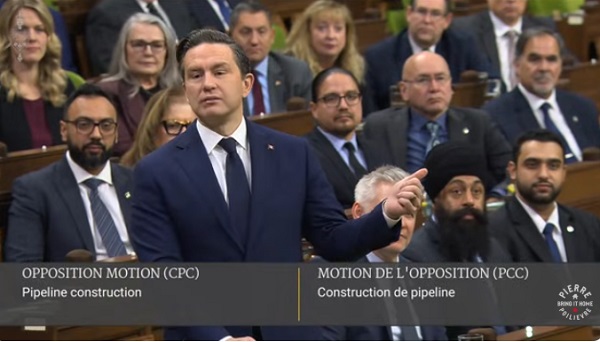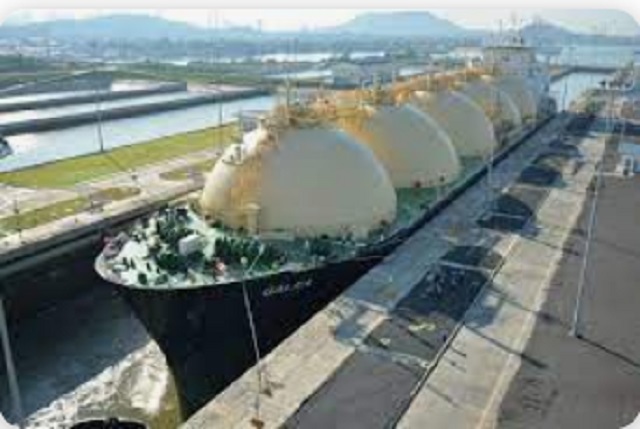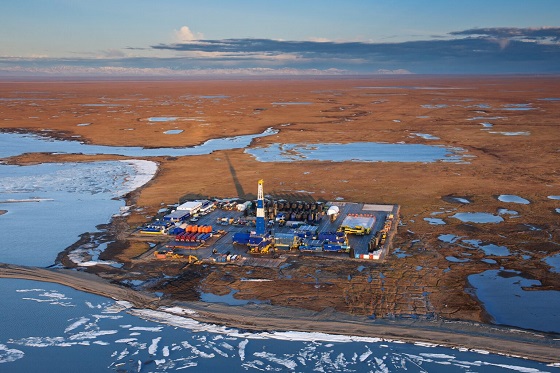Energy
We can and must adjust to climate change – and not kill billions

From the Frontier Centre for Public Policy
By Paul Driessen and Ronald Stein
The futures of poor developing countries hinge on their ability to harness foundational elements: fuels, electricity, minerals and feed stocks made from fossil fuels and other materials that are the basis for all buildings, infrastructures and other technologies in industrialized countries.
We’ve always done so and have no right to tell others they can’t have modern living standards.
Earth’s climate has changed many times over four billion years, and 99.999% of those changes occurred before humans were on this planet. During that short time, humans adjusted their housing, clothing and agriculture in response to climate changes. Can we now control the climate?
Except for decades-long droughts or massive volcanic explosions that ended some civilizations, humanity generally adjusted successfully – through a Pleistocene Ice Age, a Little Ice Age, a Dust Bowl and other natural crises. Numerous state high temperature records were set in Dust Bowl years.
After putting our current “microsecond” on Earth into its proper perspective, we might therefore ask:
* With today’s vastly superior technologies, why would humanity possibly be unable to adjust to even a few-degrees temperature increase, especially with more atmospheric carbon dioxide helping plants grow faster and better, providing more food for animals and people?
* How dare the political, bureaucratic, academic and media ruling elites – who propagate GIGO computer predictions, calculated myths and outright disinformation – tell us we must implement their “green” policies immediately and universally … or humanity won’t survive manmade climate influences that are minuscule compared to the planetary, solar and galactic forces that really control Earth’s climate?
* How dare those elites tell Earth’s poorest people and nations they have no right to seek energy, health and living standards akin to what developed countries already enjoy?
Scientists, geophysicists and engineers have yet to explain or prove what caused the slight change in global temperatures we are experiencing today – much less the huge fluctuations that brought five successive mile-high continental glaciers, and sea levels that plunged 400 feet each time (because seawater was turned to ice), interspersed with warm inter-glacial periods like the one we’re in now.
Moreover, none of the dire predictions of cataclysmic temperature increases, sea level rise, and more frequent and intense storms have actually occurred, despite decades of climate chaos fearmongering.
Earth continues to experience climate changes, from natural forces and/or human activity. However, adjusting to small temperature, sea level and precipitation changes would inflict far less harm on our planet’s eight billion people than would ridding the world of fossil fuels that provide 80% of our energy and myriad products that helped to nearly double human life expectancy over the past 200 years.
Today, with fuels, products, housing and infrastructures that didn’t even exist one or two centuries ago, we can adjust to almost anything.
When it’s cold, we heat insulated homes and wear appropriate winter clothing; when it’s hot, we use air conditioning and wear lighter clothing. When it rains, we remain dry inside or with umbrellas; when it snows, we stay warm indoors or ski, bobsled and build snowmen.
Climate changes may impact us in many ways. But eliminating coal, oil and natural gas – with no 24/7/365 substitutes to replace them – would be immoral and evil. It would bring extreme shortages of reliable, affordable, essential energy, and of over 6,000 essential products derived from fossil fuels.
It would inflict billions of needless deaths from diseases, malnutrition, extreme heat and cold, and wild weather – on a planet where the human population has grown from 1 billion to 8 billion since Col. Edwin Drake drilled the first oilwell in 1859.
* Weather-related fatalities have virtually disappeared, thanks to accurate forecasting, storm warnings, modern buildings, and medicines and other petroleum-based products that weren’t available even 100 years ago.
* Fossil fuels for huge long-range jets and merchant ships move people, products, food and medications to support global trade, mobility, health and lifestyle choices. Indeed, more than 50,000 merchant ships, 20,000 commercial aircraft and 50,000 military aircraft use fuels manufactured from crude oil.
* Food to feed Americans and humanity would be far less abundant and affordable without the fertilizers, insecticides, herbicides, and tractor and transportation fuels that come from oil and natural gas.
* Everything powered by electricity utilizes petroleum-based derivatives: wind turbine blades and nacelle covers, wire insulation, iPhone and computer housings, defibrillators, myriad EV components and more.
Petroleum industry history demonstrates that crude oil was virtually useless until it could be transformed in refineries and chemical plants into derivatives that are the foundation for plastics, solvents, medications and other products that support industries, health and living standards. The same is true for everything else that comes out of holes in the ground.
Plants and rocks, metals and minerals have no inherent value unless we learn how to cook them, extract metals from them, bend and shape them, or otherwise convert them into something we can use.
Similarly, the futures of poor developing countries hinge on their ability to harness foundational elements: fuels, electricity, minerals and feed stocks made from fossil fuels and other materials that are the basis for all buildings, infrastructures and other technologies in industrialized countries.
For the 80% of humanity in Africa, Asia and Latin America who still live on less than $10 a day – and the billions who still have little to no access to electricity – life is severely complicated and compromised by the hypocritical “green” agendas of wealthy country elites who have benefited so tremendously from fossil fuels since the modern industrial era began around 1850. Before that:
* Life spans were around 40 years, and people seldom travelled more than 100 miles from their birthplaces.
* There was no electricity, since generating, transmitting and utilizing this amazing energy resource requires technologies made from oil and natural gas derivatives.
* That meant the world had no modern transportation, hospitals, medicines and medical equipment, kitchen and laundry appliances, radio and other electronics, cell phones and other telecommunications, air and space travel, central heating and air conditioning, or year-round shipping and preservation of meats, fruits and vegetables, to name just a few things most of us just take for granted.
There are no silver-bullet solutions to save people from natural or man-made climate changes. However, adjusting to those fluctuations is the only solution that minimizes fatalities which would be caused by the callous or unthinking elimination of the petroleum fuels and building blocks that truly make life possible and enjoyable, instead of nasty, brutish and short. The late Steven Lyazi explained it perfectly:
“Wind and solar are … short-term solutions …. to meet basic needs until [faraway Ugandan villages] can be connected to transmission lines and a grid. Only in that way can we have modern homes, heating, lighting, cooking, refrigeration, offices, factories, schools, shops and hospitals – so that we can enjoy the same living standards people in industrialized countries do (and think is their right). We deserve the same rights and lives.
“What is an extra degree, or even two degrees, of warming in places like Africa? It’s already incredibly hot here, and people are used to it. What we Africans worry about and need to fix are malnutrition and starvation, the absence of electricity, and killer diseases like malaria, tuberculosis, sleeping sickness and HIV/AIDS…. We just need to be set free to [get the job done].”
Paul Driessen is senior policy analyst for the Committee For A Constructive Tomorrow (www.CFACT.org), and author of articles and books on environmental, climate and human rights issues.
Ronald Stein is an engineer, senior policy advisor on energy literacy for the Heartland Institute and CFACT, and co-author of the Pulitzer Prize-nominated book “Clean Energy Exploitations.”
Alberta
The case for expanding Canada’s energy exports

From the Canadian Energy Centre
For Canada, the path to a stronger economy — and stronger global influence — runs through energy.
That’s the view of David Detomasi, a professor at the Smith School of Business at Queen’s University.
Detomasi, author of Profits and Power: Navigating the Politics and Geopolitics of Oil, argues that there is a moral case for developing Canada’s energy, both for Canadians and the world.
CEC: What does being an energy superpower mean to you?
DD: It means Canada is strong enough to affect the system as a whole by its choices.
There is something really valuable about Canada’s — and Alberta’s — way of producing carbon energy that goes beyond just the monetary rewards.
CEC: You talk about the moral case for developing Canada’s energy. What do you mean?
DD: I think the default assumption in public rhetoric is that the environmental movement is the only voice speaking for the moral betterment of the world. That needs to be challenged.
That public rhetoric is that the act of cultivating a powerful, effective economic engine is somehow wrong or bad, and that efforts to create wealth are somehow morally tainted.
I think that’s dead wrong. Economic growth is morally good, and we should foster it.
Economic growth generates money, and you can’t do anything you want to do in social expenditures without that engine.
Economic growth is critical to doing all the other things we want to do as Canadians, like having a publicly funded health care system or providing transfer payments to less well-off provinces.
Over the last 10 years, many people in Canada came to equate moral leadership with getting off of oil and gas as quickly as possible. I think that is a mistake, and far too narrow.
Instead, I think moral leadership means you play that game, you play it well, and you do it in our interest, in the Canadian way.
We need a solid base of economic prosperity in this country first, and then we can help others.
CEC: Why is it important to expand Canada’s energy trade?
DD: Canada is, and has always been, a trading nation, because we’ve got a lot of geography and not that many people.
If we don’t trade what we have with the outside world, we aren’t going to be able to develop economically, because we don’t have the internal size and capacity.
Historically, most of that trade has been with the United States. Geography and history mean it will always be our primary trade partner.
But the United States clearly can be an unreliable partner. Free and open trade matters more to Canada than it does to the U.S. Indeed, a big chunk of the American people is skeptical of participating in a global trading system.
As the United States perhaps withdraws from the international trading and investment system, there’s room for Canada to reinforce it in places where we can use our resource advantages to build new, stronger relationships.
One of these is Europe, which still imports a lot of gas. We can also build positive relationships with the enormous emerging markets of China and India, both of whom want and will need enormous supplies of energy for many decades.
I would like to be able to offer partners the alternative option of buying Canadian energy so that they are less reliant on, say, Iranian or Russian energy.
Canada can also maybe eventually help the two billion people in the world currently without energy access.
CEC: What benefits could Canadians gain by becoming an energy superpower?
DD: The first and primary responsibility of our federal government is to look after Canada. At the end of the day, the goal is to improve Canada’s welfare and enhance its sovereignty.
More carbon energy development helps Canada. We have massive debt, an investment crisis and productivity problems that we’ve been talking about forever. Economic and job growth are weak.
Solving these will require profitable and productive industries. We don’t have so many economic strengths in this country that we can voluntarily ignore or constrain one of our biggest industries.
The economic benefits pay for things that make you stronger as a country.
They make you more resilient on the social welfare front and make increasing defence expenditures, which we sorely need, more affordable. It allows us to manage the debt that we’re running up, and supports deals for Canada’s Indigenous peoples.
CEC: Are there specific projects that you advocate for to make Canada an energy superpower?
DD: Canada’s energy needs egress, and getting it out to places other than the United States. That means more transport and port facilities to Canada’s coasts.
We also need domestic energy transport networks. People don’t know this, but a big chunk of Ontario’s oil supply runs through Michigan, posing a latent security risk to Ontario’s energy security.
We need to change the perception that pipelines are evil. There’s a spiderweb of them across the globe, and more are being built.
Building pipelines here, with Canadian technology and know-how, builds our competitiveness and enhances our sovereignty.
Economic growth enhances sovereignty and provides the resources to do other things. We should applaud and encourage it, and the carbon energy sector can lead the way.
Automotive
The $50 Billion Question: EVs Never Delivered What Ottawa Promised

Beware of government promises that arrive gift-wrapped in moral certainty.
The pattern repeats across the sector: subsidies extracted, production scaled back, workers laid off, taxpayers absorbing losses while executives collect bonuses and move on, and politicians pretend that it never happened. CBC isn’t asking Justin Trudeau, Katherine McKenna or Steven Guilbeault any questions about it. They are not asking Mark Carney.
Buy an electric vehicle, they said, and you will save the planet, no questions asked. Justin Trudeau and several of his ministers proclaimed it from podiums. Environmental activists, often cabinet members, chanted it at rallies. Automotive executives leveraged it to extract giant subsidies. For over a decade, the message never wavered: until $50 billion in public money disappeared into corporate failures, and the economic wreckage became impossible to ignore.
Prime Minister Mark Carney, himself a spokesperson for the doomsday culture, inherited the policy disaster from Trudeau and still clings to the wreckage. The 2026 EV sales target sits suspended, a grudging acknowledgment that reality refused to cooperate with radical predictions and Ottawa’s mandates. Yet the 2030 and 2035 targets remain federal law, monuments to a central-planning exercise that delivered the opposite of what it promised.
Their claims were never quite true. Electric vehicles were pure good. They were marketed as unconditionally cleaner than conventional cars, a transformation so obviously beneficial that questioning it invited accusations of climate denial. Government messaging suggested switching to an EV meant immediate environmental virtue. The nuance, the conditions, and the caveats were conveniently omitted from the government sales pitch that justified tens of billions of your money into subsidies for foreign EV manufacturing and corporate advancement.
The Reality Ottawa Is Hiding
Research documented the conditional nature of EV benefits for over a decade, yet Ottawa proceeded as if the complexity didn’t exist. Studies from China, where coal dominates electricity generation, showed as early as 2010 that EVs in coal-dependent regions had “very limited benefits” in reducing emissions compared to gasoline vehicles. In Northern China, where electricity generation is over 80% coal-based, EVs could produce lifecycle emissions comparable to or even higher than those of conventional cars. A 2015 Chinese study found that EVs generated lifecycle emissions that were only 18% lower than those of gasoline vehicles, compared to 40-70% reductions in regions with cleaner grids.
Volvo began publishing transparent lifecycle assessments for its first EV in 2019, making it the first major automaker to document the significant upfront emissions from battery production publicly. Their 2021 C40 Recharge report, released during the COP26 climate summit in Glasgow, revealed that manufacturing an EV produces 70% more emissions than building a comparable conventional vehicle. But there are no CBC reports about that. The Volvo report showed that an EV charged on a coal-heavy global grid required 68,000 to 110,000 miles of driving to break even with a conventional car, potentially more than half the vehicle’s usable lifetime. For drivers with low annual mileage in regions with dirty electricity grids, that breakeven point could take six to nine years to reach, if ever.
Battery manufacturing location proved enormously consequential. Production in China, powered by coal, generates 60-85% higher emissions than manufacturing in Europe or the United States. Yet Canadian subsidies flowed to companies regardless of where batteries were made or where vehicles would be charged. The federal government committed over $50 billion without requiring the environmental due diligence that should precede such massive public investment.
The Canadian government never acknowledged Volvo’s findings. Not once. A search of federal policy documents, ministerial statements, and environmental assessments from 2019 forward reveals no mention of the lifecycle complexities Volvo documented. Ottawa’s silence on inconvenient research speaks loudly about how ideology trumped evidence in shaping EV policy.
You want to build a pipeline in Canada. There will be 8 to 10 years of red tape and environmental impact assessments. But if you say you want to make EVs, Laurentian provincial premiers and the feds will bend over backwards. They handed over billions while the economy and social conditions in their cities decayed.
The environmental promise was conditional: clean electricity grids, high annual mileage, manufacturing in regions with low-carbon energy, and vehicles driven long enough to offset the massive carbon debt from battery production. Remove those conditions, and the environmental case collapses. The subsidies, however, remained unconditional.
The Subsidies Flow, The Companies Fail
Corporate casualties now litter the landscape. Northvolt received $240 million in federal subsidies to build a Quebec battery plant before filing for bankruptcy protection in November. Lion Electric, Quebec’s homegrown EV manufacturer, burned through $100 million in government support before announcing massive layoffs and production cuts. Arrival, which secured subsidies for its electric van facility, collapsed entirely, leaving taxpayers with nothing but broken promises.
Stellantis and LG Energy Solution extracted $15 billion, the most extensive corporate handout in Canadian history, for their Windsor battery plant. Volkswagen secured $13 billion for St. Thomas. Provincial governments layered on additional incentives. The public investment dwarfed any plausible return, yet the money kept flowing based on environmental claims the government either never bothered to verify or suppressed from its own documents and reports.
Despite this flood of subsidies and regulatory coercion, Canadian consumers rejected the offering. Even with massive incentives, EVs accounted for only 15% of new vehicle sales in 2024, far short of the mandated 20% target for 2026, let alone the 60% demanded by 2030. When federal subsidies ended in early 2025, sales collapsed to 9%, revealing the limited consumer demand. Dealer lots overflow with unsold inventory. Manufacturers scaled back production plans. The market spoke; Ottawa is only half listening.
The GM plant in Oshawa serves as a cautionary tale. Thousands of jobs lost. Promises of green manufacturing jobs evaporated. Workers who believed government assurances that EV mandates would secure their livelihoods found themselves unemployed as companies redirected production or collapsed entirely. The pattern repeats across the sector: subsidies extracted, production scaled back, workers laid off, taxpayers absorbing losses while executives collect bonuses and move on, and politicians pretend that it never happened. CBC isn’t asking Justin Trudeau, Katherine McKenna or Steven Guilbeault any questions about it. They are not asking Mark Carney.
The Central Planning Failure
The EV disaster illustrates why economies run by political offices never succeed. Friedrich Hayek observed that “The curious task of economics is to demonstrate to men how little they really know about what they imagine they can design.” Politicians and bureaucrats in Ottawa do not possibly possess the dispersed knowledge embedded in millions of individual economic decisions. But they think that they do.
Markets aggregate information that no central planner can access. Consumer preferences for vehicle range, charging convenience, and total cost of ownership. Regional variations in electricity generation and the pace of grid decarbonization. Battery technology improvements and supply chain vulnerabilities. Resource constraints and mining capacity. These factors interact in ways too complex for any cabinet planning committee to comprehend, yet Ottawa presumed to mandate outcomes a generation in advance.
Federal ministers with no experience in automotive manufacturing or battery chemistry presumed to direct the transformation of a trillion-dollar industry. Career bureaucrats drafted regulations determining which vehicles Canadians could purchase years hence, as if they possessed prophetic knowledge of technological development, grid decarbonization rates, consumer preferences, and global supply chains.
The EV mandate attempted to force a technological transition. It was an economic coup. Environmental claims proved conditional at best. Billions in subsidies flowed to failing companies. Taxpayers absorbed losses while corporations extracted rents and walked away. It worked well for the corporations, but the coup failed Canadians and Canadian workers. They are not building back better.
Green ideology provided perfect cover for this overreach. Invoke climate emergency, and fiscal responsibility vanishes. Question subsidies and you’re labelled a denier. Point out that environmental benefits depend on specific conditions, and you’re accused of spreading misinformation. The rhetorical shield, aided and abetted by a complicit media unable to see past its own financial interests, allowed government to bypass scrutiny that should attend any massive industrial policy intervention.
The Trust Deficit
As Canadians learn that EV environmental benefits depend heavily on electricity sources and driving patterns, as they watch subsidized companies collapse, as they discover how thoroughly the promise was oversold and how completely Ottawa ignored contrary evidence, trust in government erodes. This badly needed skepticism will spread beyond EVs and undermine legitimate government functions.
It would be good if future government claims about environmental policy face rising skepticism. Corporations wrapping themselves in green rhetoric may be viewed as con artists. Environmental activists who championed these policies may see their credibility destroyed. When citizens conclude their government systematically misled them about costs, benefits, and basic facts while suppressing inconvenient research, liberal democracy itself suffers. But that may not happen at all in Laurentian LaLa-land or in the Pacific Lotusland.
Over fifty billion dollars are distributed among local and foreign industrialists, while tens of thousands live in tents in Laurentian cities.
The EV debacle demonstrates that overselling policy benefits, suppressing complexity, and using ideology to short-circuit debate produce a backlash far worse than honest acknowledgment of nuance would have. The damage compounds when governments commit billions based on conditional environmental claims they never verified, then remain silent when industry-leading manufacturers publish data revealing those conditions.
The Path Forward
Canada needs a full repeal of the EV mandate and a complete retreat from Ottawa directing market decisions. The EV law must be struck, not merely paused. The 2030 and 2035 targets must be abandoned entirely. No new subsidies for EV production (or any other production). No bailouts for failed battery plants. No additional funds for charging infrastructure. And absolutely no subsidies for conventional or hybrid vehicle production justified by the same environmental complexity that should have prevented EV mandates in the first place.
Let markets determine which technologies Canadians choose. If EVs deliver genuine value for specific consumers in specific circumstances—those with clean electricity grids, high annual mileage, and long vehicle ownership timelines—those consumers will buy them without mandates or subsidies. If hybrids or improved conventional vehicles better serve other consumers’ needs, manufacturers will produce them without government direction.
The aggregated wisdom of millions of economic actors making decisions based on their actual circumstances will produce better outcomes than any planning committee in Ottawa. Some Canadians will find EVs deliver environmental and financial benefits. Others will not. Both conclusions can be correct simultaneously, a nuance Ottawa spent $50 billion refusing to acknowledge.
Markets work because no one has to know everything. Central planning fails because someone must. I wish I could say that Ottawa has learned this lesson the expensive way. Or whether Laurentians will remember it at the next election. Or whether the same politicians and bureaucrats who delivered this disaster will identify the next technology to mandate and subsidize, armed with new promises that reality will eventually expose as conditional at best.
But let’s keep our dreams in check. It seems more likely, given their ideological make-up and propensities for certainty, that low-information Laurentian and Pacific Coast voters will go right for the next green-washed fantasy that the feds and provincial governments will put in front of them, provided it is coiled into a catchy slogan.
Subscribe to Haultain Research.
For the full experience, and to help us bring you more quality research and commentary,
please upgrade your subscription.
-

 National2 days ago
National2 days agoLiberal bill “targets Christians” by removing religious exemption in hate-speech law
-

 Crime2 days ago
Crime2 days agoInside the Fortified Sinaloa-Linked Compound Canada Still Can’t Seize After 12 Years of Legal War
-

 C2C Journal10 hours ago
C2C Journal10 hours agoWisdom of Our Elders: The Contempt for Memory in Canadian Indigenous Policy
-

 Business1 day ago
Business1 day agoLooks like the Liberals don’t support their own Pipeline MOU
-

 Business2 days ago
Business2 days agoThe Climate-Risk Industrial Complex and the Manufactured Insurance Crisis
-

 Health2 days ago
Health2 days agoThe Data That Doesn’t Exist
-

 Business24 hours ago
Business24 hours agoConservative MP warns Liberals’ national AI plan could increase gov’t surveillance
-

 Business1 day ago
Business1 day agoCanada Can Finally Profit From LNG If Ottawa Stops Dragging Its Feet






